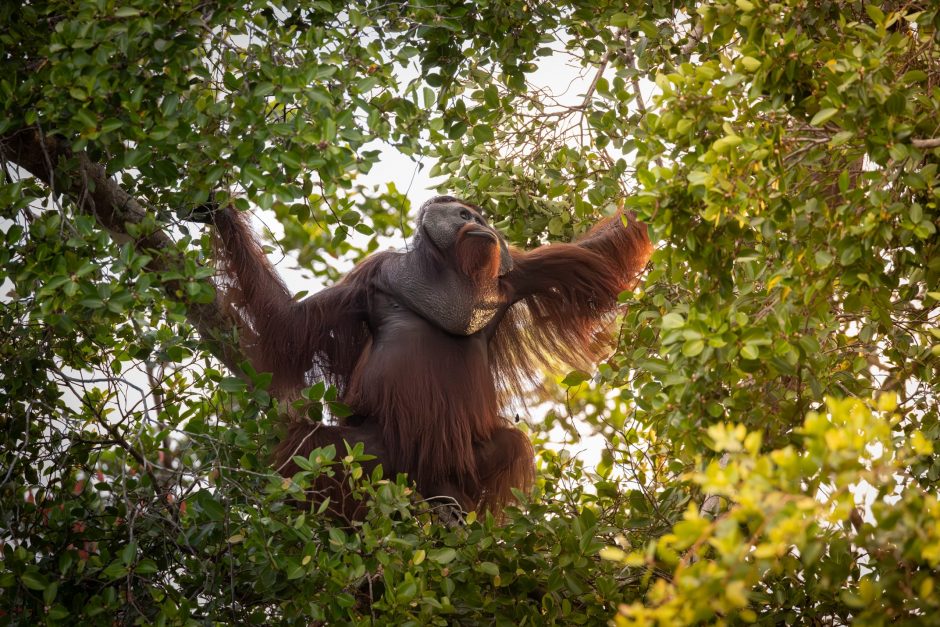
How to take Stunning Photographs of Orangutans in Borneo
As we seek more and more authentic wilderness in today’s world, Borneo stands out. It’s a spectacular combination of expansive tropical landscapes and epic wildlife—both big and small.
The orangutan tends to set itself apart from the rest and is often the primary draw to this tropical wilderness. If you’re headed to Borneo on a photo expedition to capture photos of these alluring cousins of ours, be sure to study up on the variety of techniques to come away with extraordinary photos that you’re both proud of and capture the essence of the mighty orangutan.
The Classic Fill-the-Frame Shot
This style of photo is likely the one most folks have in mind when dreaming of “the perfect shot” of an orangutan. It’s big, it showcases the animal in an emotional way, it’s sharp and it makes a profound impact on the viewer.

Of course one of the first things to consider is that you must either be close to the orangutan subject, which is usually quite possible in the semi-wild orangutan sanctuaries that have made Borneo so famous, or you must have a great telephoto lens. In many cases, it’s a combination of the two to get such a photo.
To really nail this type of shot, the first thing I try to do is minimize any of the environment. While wildlife-in-landscape photos are spectacular (and we’ll get to that next) in these shots you want to deliberately minimize including the sky, the branches, or any background. Other inclusions like these merely detract from the primary objective, which is to show a big, sharp, see-into-their-soul kinda shot.
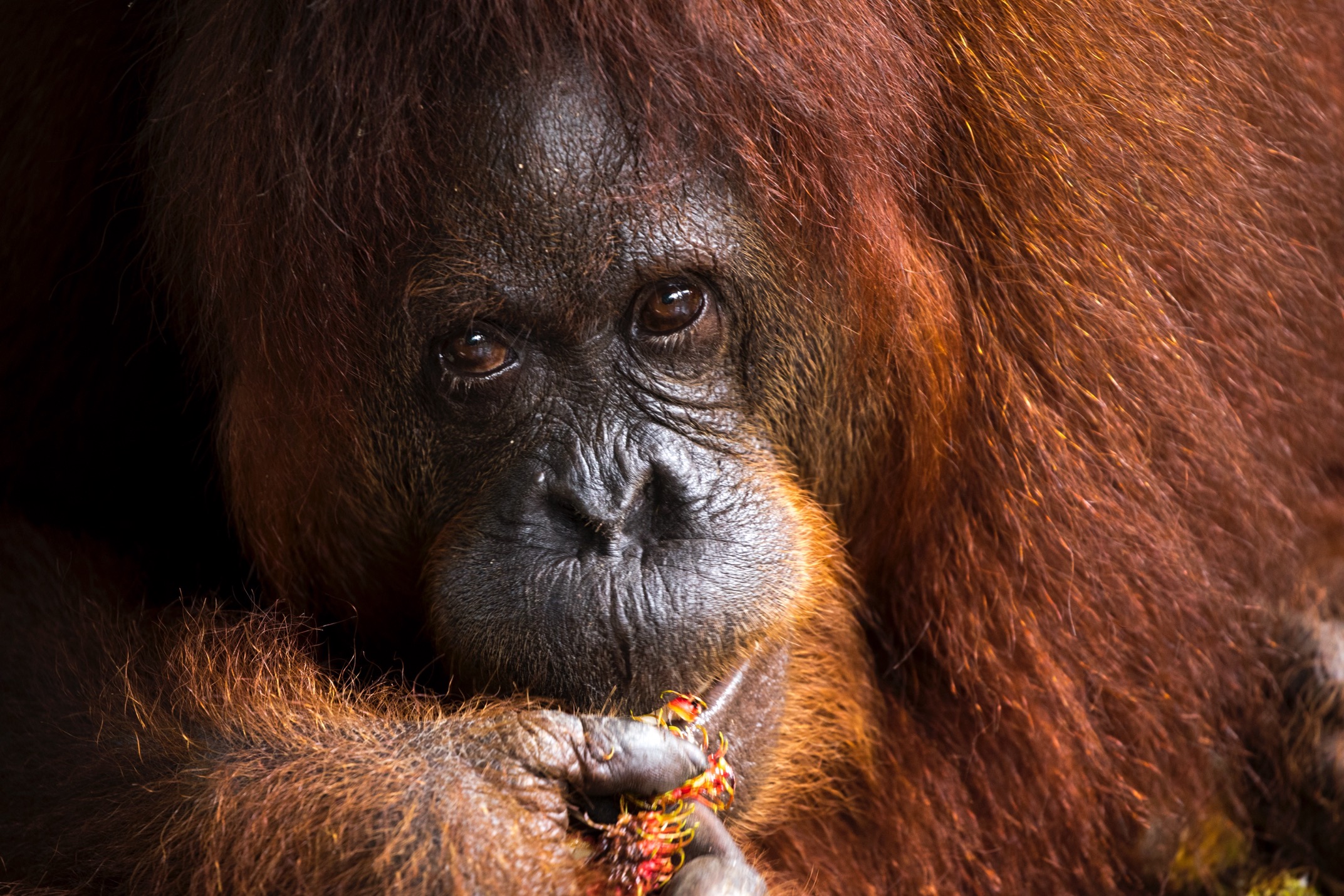
Next, you’ll want to shoot on a smaller aperture, aka big f/number. The reason for this is that you want to ensure that the eyes are fully in focus, as well as other features of the face like the nose, forehead, and all the little hairs that protrude from the face. A shallow depth of field wouldn’t necessarily botch this type of shot, but when we want ultimate focus, a big depth of field is generally preferred.
To achieve this big depth of field, I’m usually starting at f/8 and working toward f/11 if I have enough light.
Light can be very limited in the tropical rain forests of Borneo, so you’re likely to already be at a minimum shutter speed and decently high ISO. 1/250 and ISO 3200 is pretty normal, so don’t be afraid to get to these while shooting for these big f/numbers to maximize focus and depth of field.
Finally, don’t shortcut your composition here, even though it’s a singular, zoom-ed in subject. Treat the eyes, forehead, nose, and other features like you would a landscape photo. Where do the rule of thirds come in and are there any leading lines? While this isn’t as crucial as with big landscape photos, composition considerations are often what send your good photo into the stratosphere and create a really stunning work of art.
Showcasing the Environment (Wildlife-In-Landscape) Shot
At the extreme other end of the spectrum, I love the opportunity to place a big animal in an even bigger landscape. The context these types of photos provide can be a game changer and result in oftentimes some of the best photos of your trip.
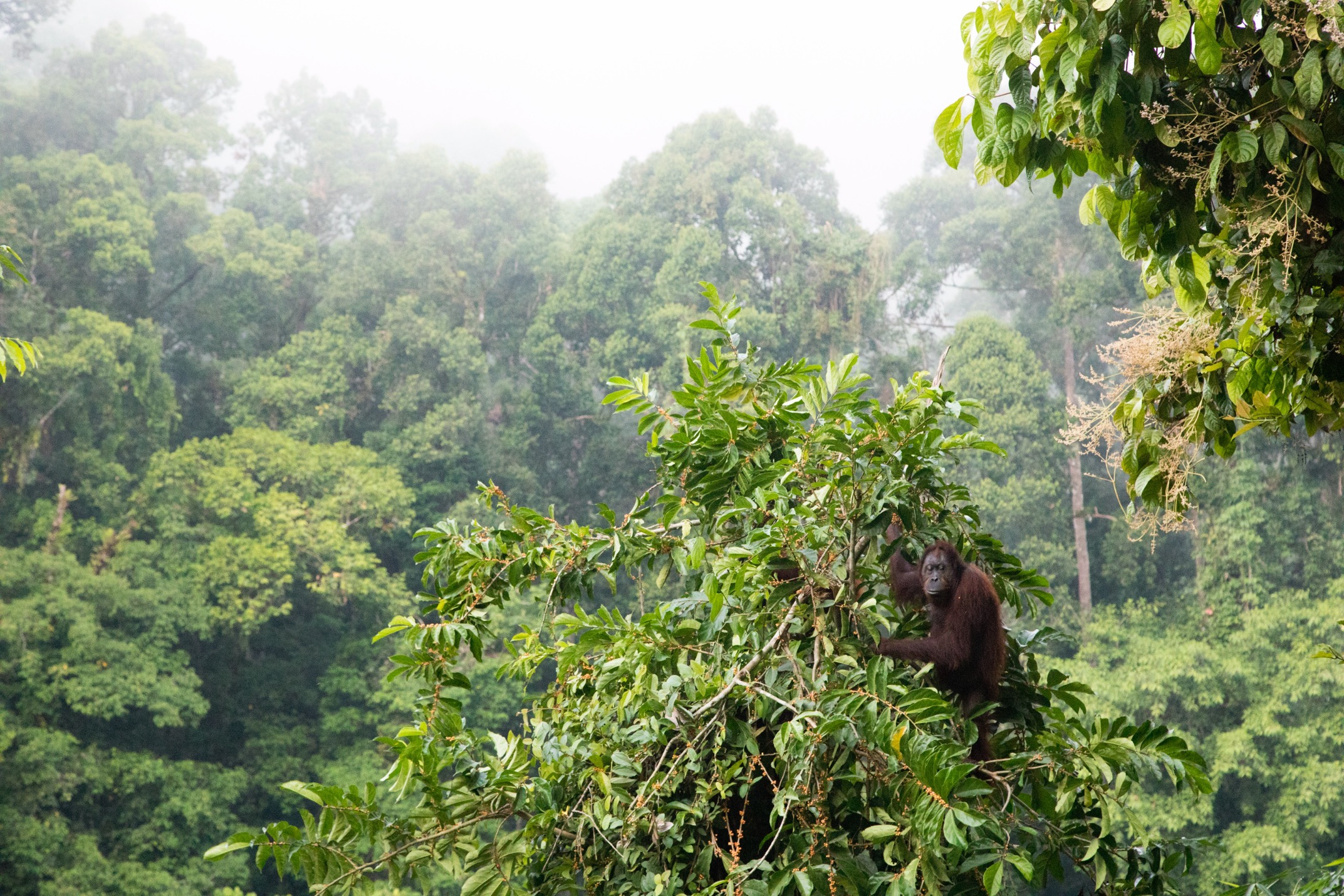
The first trick to getting these shots is to be cognizant of the opportunity in the first place. To put it another way, when in front of a great ape like the orangutan, we are all tempted to zoom in and fill the frame like I’ve discussed in the previous section. Those are great photos, but not the only photos to take here.
If you are reasonably close to an orangutan like on proper Borneo Photo Expeditions, it will pay huge dividends to pause for a moment, zoom out, and perhaps even put on a wider lens. This may sound obvious, but having guided oh-so-many photo expeditions over the years, I can tell you that in the moment it’s easy to forget.
The next thing you want to do is to analyze your depth of field needs. The reason I say needs is that this can be subjective and flexible. Some shots are great with big depth of fields where the orangutan is in focus, as well as the background. However, the best shots that I’ve taken and seen is when the orangutan is in focus, but the background is blurred a bit, thus creating a depth and layering effect to the photo.
Essentially, this blur makes the landscape look deep and impressive.
The other thing this technique does is draw attention to your subject, while also bolstering perceived sharpness. The animal isn’t necessarily sharper, but in contrast to the blurred background, it appears sharper. This is immensely helpful in helping showcase your subject in context to its environment. Plus, sometimes when everything is in focus it can be distracting and it can cause the viewer to be unsure of where to look first.
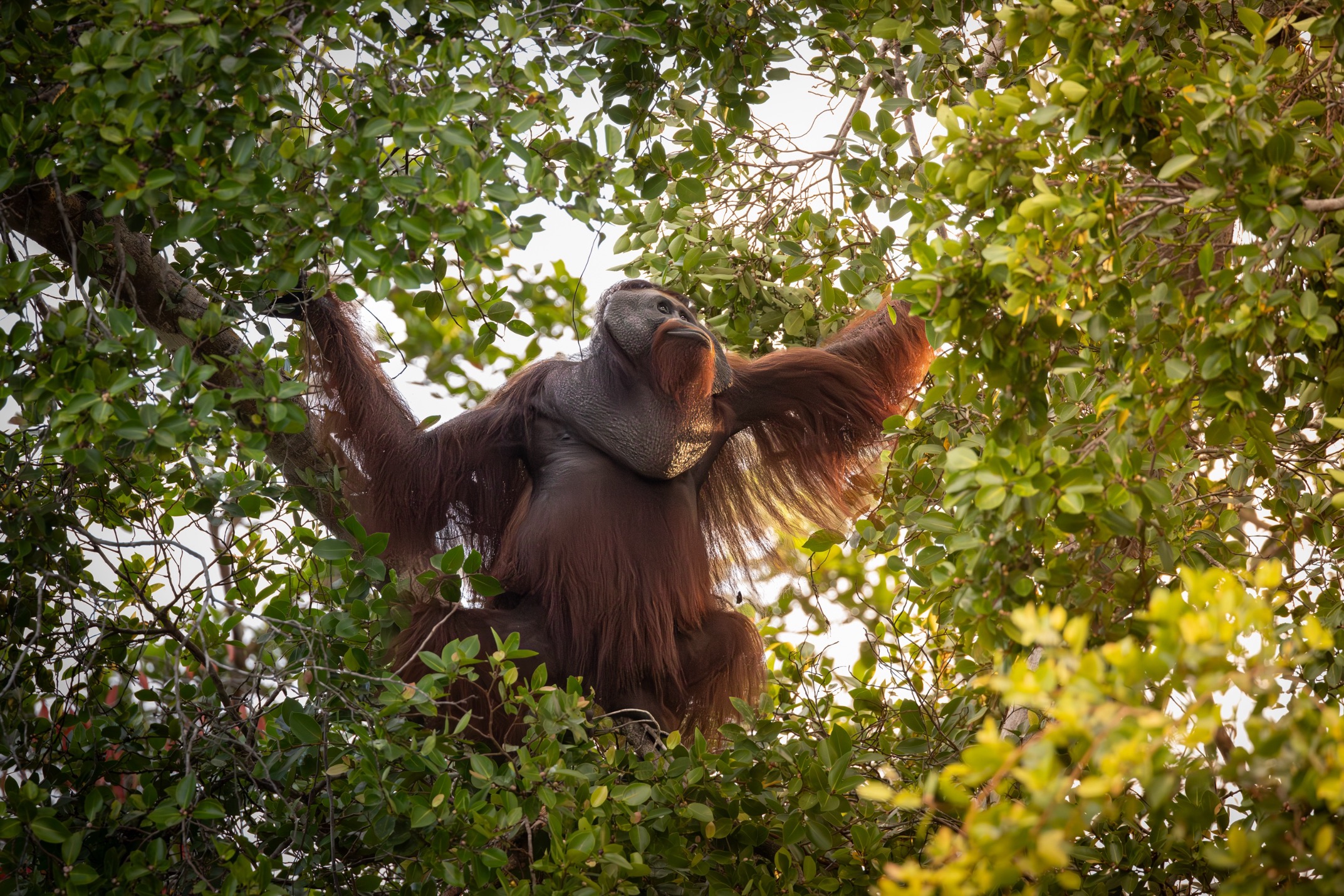
These can be some of the more challenging orangutan photos to capture, as they don’t pop up all the time. Sometimes in order to get a big landscape you might have structures, people, or other distractions in the way. Or, the environment may just not be that impressive or photogenic. Maybe the lighting is very mottled with sun and shadows. These are all commonplace issues.
The best you can do is try and primarily be aware that these are coveted shots, so anytime you spot your orangutan, start to analyze the environment around the animal. If you are noticing a deep background with even lighting—snap, snap, snap away! If conditions aren’t optimal, I still highly recommend taking these shots, as they really help tell the story, even if the photo isn’t wall-worthy.

It’s essential to remember that what your photo looks like on the back of your camera is not what it will look like on a computer screen, blown up, or even cropped. Stick to the plan and take some great wildlife-in-landscape shots of orangutans to fully stack your portfolio of the trip.
Classic Wildlife Portraiture
Generally we think of portraiture as photos of people, but our great ape cousins present wonderful opportunities for classic wildlife portraiture.
But what constitutes a wildlife portrait?
Well, as with most art, this is subjective, but in my opinion it’s when the animal fills roughly half of total frame area (not 10% like wildlife-in-landscape nor 80%+ with fill-the-frame shots), giving room for some color and texture in the background, but ultimate focus and sharpness reserved for the subject itself. In fact, oftentimes we shoot at the smallest f/numbers (shallowest depth of field) in order to further isolate the subject and create dominance in the scene.
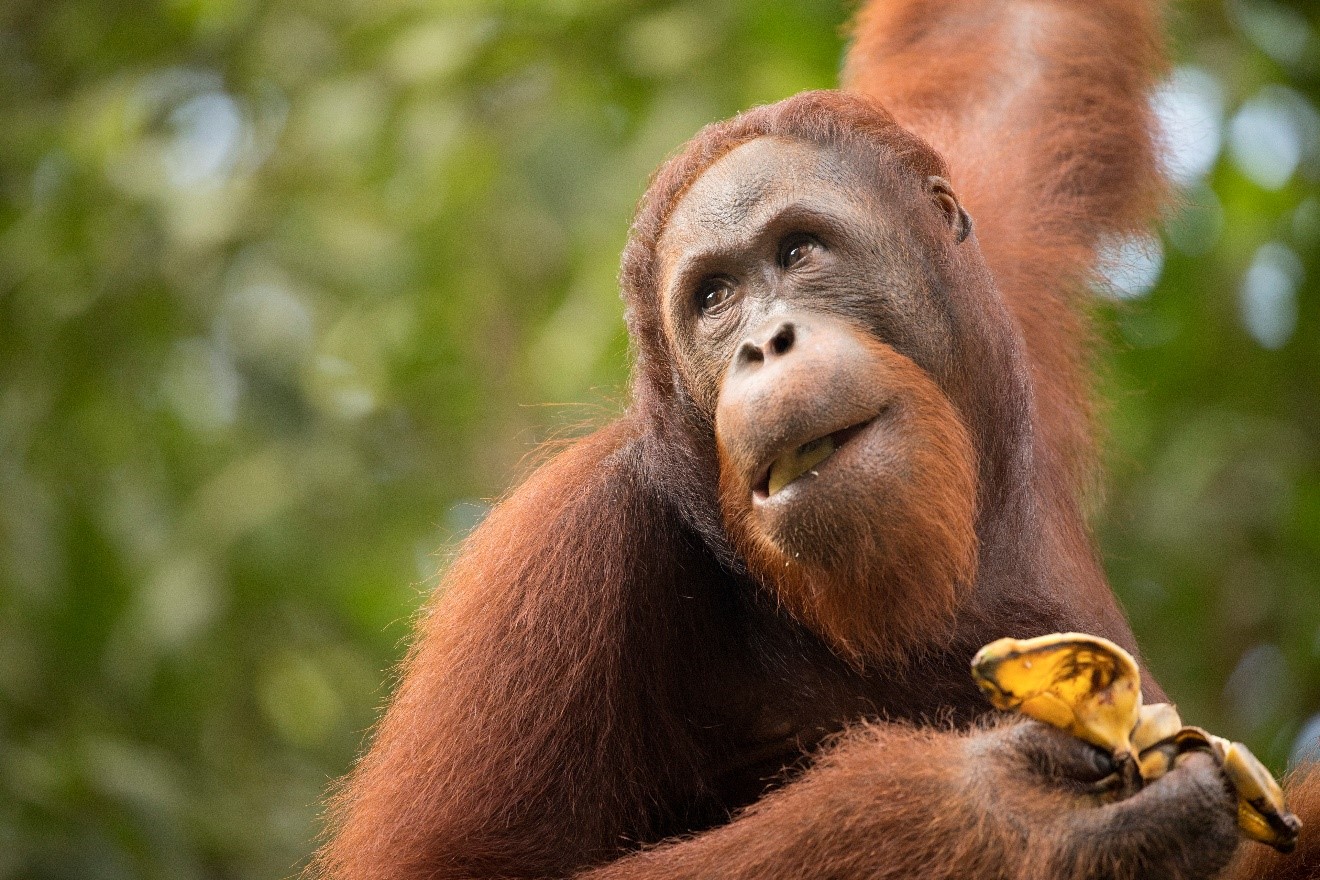
I also feel that having the subject’s eyes are part of the story is a bonus. Not necessarily looking directly into the camera, but featured and notable at least.
The trick with orangutan portraits are that they don’t usually sit on a chair and do what you tell them. Humans are much easier in this case.
Orangutans are almost always moving and while they don’t necessarily have huge home ranges, they are feeding, swinging, nest-building, or sometimes even walking on the ground. Thus, your portraiture needs to have a certain special consideration, in addition to the usual f/2.8 or f/4 aperture.
You need some speed.
Because portraiture relies on sharpness, motion blur can be disastrous to any portrait attempt. Thus, it’s really critical to shoot fast.
Fortunately, the shallow depth of field you’re aiming for correlates to a small f/number, which lets in the maximum amount of light.
However, you must gauge the movement of the animal and be ready to set a fast shutter speed, sometimes even in the 1/1000 or faster range. If swinging quickly through the trees, 1/1600 isn’t crazy.
Just be ready to use a high ISO like 2000, 3200, or even 6400 to ensure the speed you need for the sharpness we all crave. I’d rather have a grainy photo that is sharp and focused 100% of the time.
With these types of shots, where I am predicting movement, how you focus comes into question. While newer cameras have advanced autofocus that can even track and continually focus on the animal’s eye, this can a) be inaccurate from time to time, so you are leaving a bit up to chance and b) this certainly doesn’t help you if you don’t have this feature on your camera.
My go-to technique is to use center-point autofocus so that the focus box always stays in the middle of the screen. Then, I typically use continuous autofocus so that as the subject moves, that which is in the focus box continuously refocuses as I halfway press the shutter button (or back button focus, depending on your style).
But there is something wrong with this technique—any ideas?
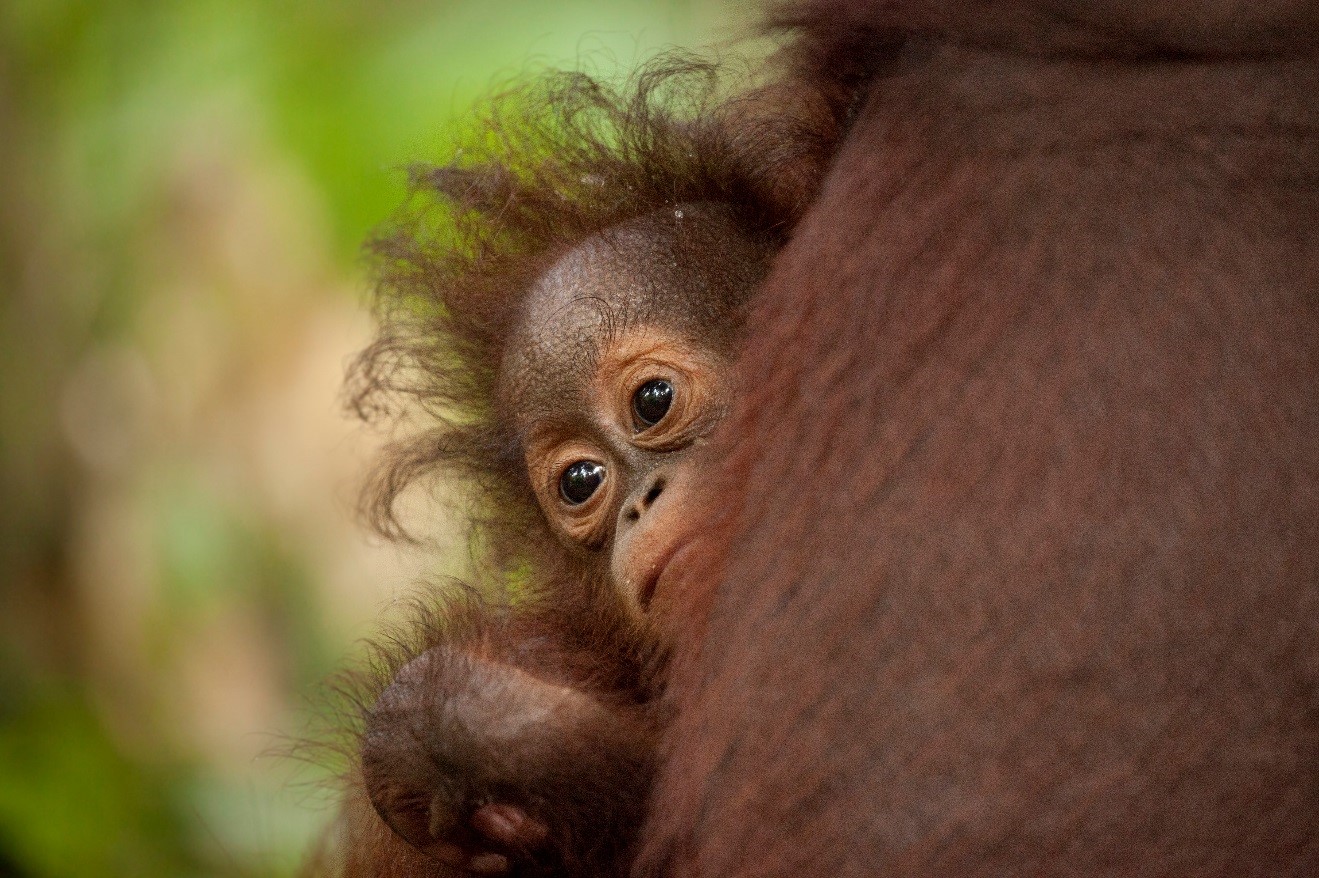
By doing this, you are setting yourself up to have your animal in the center of your photo each and every time. And knowing the rule of thirds, we want to generally offset the animal so that it’s on one side of the frame or the other—ideally looking into the open part of the frame. The above photo happens to be an exception, as the mother’s body covers the right third, with soft green background in the left third. Thus, the subject in the smack middle works ok.
To solve for this issue the rest of the time, I simply zoom out slightly and plan to crop my photo in order to adhere to the rule of thirds. This also helps greatly with tracking the animal and keeping it in your frame, which can be challenging if you’re zoomed all the way in.
The small bit of pixels I “throw away” by cropping slightly is worth it for the ease of the technique. Plus, I’m sure I’ve gotten photos this way that I would have otherwise missed if zoomed in all the way while taking each photo.
The other way to deal with this off-of-center goal is to wait for the movement to stop briefly and use single shot autofocus to lock focus in while the orangutan is in the center, hold the shutter, and then recompose. I engage this technique often, too, but the risk is that you won’t get the pause in movement you were hoping for, or movement resumes in the split second that you are recomposing the shot. Nevertheless, this is also a viable and well-used technique.
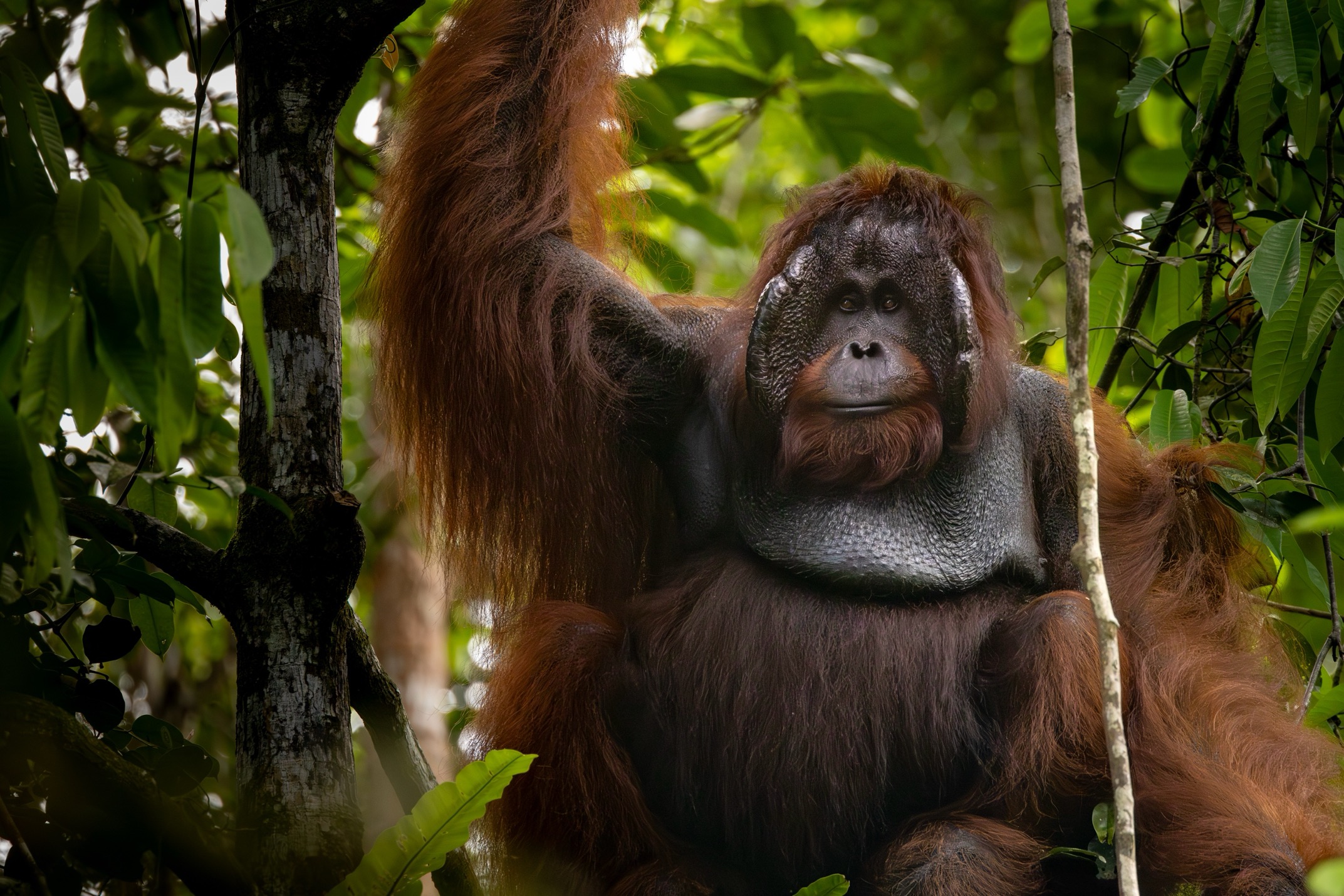
There are few things more thrilling than photographing the great apes of the world, and the orangutan tends to be one of the less common subjects. For this reason you’ll want to photograph orangutans in all the ways possible when on a Borneo Photo Expedition.
It’s a natural progression of things to start with the fill-the-frame shot and work backwards, as you capture big shots first and then zoom out as we capture our most desired photos first. However, oftentimes we can start with wildlife-in-landscape shots as we wait for orangutans to get closer, or if we safely and considerately approach them when in the wild.
The key point is to be aware of these three techniques so that you are thinking of them throughout these special photo moments and opportunities in Borneo.
If you have additional techniques please feel free to comment below!
All the best,

Court
1 Comment

Tina Schreiner
August 10, 2024 at 3:43 am
All the new articles and photographs are wonderful!